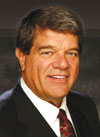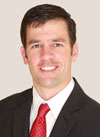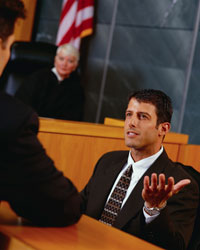

By Roger J. Dodd and Matt Dodd
Aug. 4, 2010 – Constructive cross-examination is a quantum shift from the historical outlook on the central purpose of cross-examination. It is not a technique, rather it is a new perspective on the ability to use cross-examination at trial to teach the cross-examiner’s theory of the case.
The old way: Destructive cross-examination
Historically, cross-examination was a series of techniques designed to challenge the witness’ testimony, including attacks on the witness’ credibility. The primary goal of destructive cross-examination was to attack the witness or the witness’ story whenever and wherever feasible. It was essentially negative or destructive in its outlook. For generations, trial lawyers were schooled in this outlook. The operable phrase was “to attack.” The cross-examining lawyer was counseled to attack, all with the central purpose of weakening the opponent’s theory of the case.
Consequently, the tone of destructive cross-examination was aggressive and negative. The courtroom climate generated by this form of cross-examination was tense. By the end of the cross-examination, someone was going to be damaged, whether it was the witness or the cross-examiner.
Under the former generation of cross-examination, the cross-examiner consciously or unconsciously believed that the critical goal of teaching her theory of the case to the fact finder would be left to her direct examinations. This most critical goal of trial was specifically reserved for direct examination of the cross-examiner’s own witnesses.
What is constructive cross-examination?

Under this newest generation of constructive cross-examination, the primary goal of cross-examination changes dramatically: use opposing witnesses to build the cross-examiner’s theory of the case. While the cross-examiner can still challenge opposing witnesses and their story, thus damaging the opponent’s theory of the case, this goal becomes secondary under constructive cross-examination.
This exponential expansion of the function and purpose of cross-examination rewards the cross-examiner with broader, more productive cross-examinations that are at the same time easier and less stressful.
Historically, the lawyer ready to cross examine would ask herself one fundamental question: “Does this particular witness hurt my theory of the case?” If the answer was no, the correct technique was often, “Ask no questions.” Under this new, modern theory of constructive cross-examination, the lawyer must expand her internal inquiry and ask herself two fundamental questions.
The first question remains the same, “Does this particular witness hurt my theory of the case?” Whether the answer is yes or no, a second, more important, question is asked: “Does this witness possess facts that I, the cross-examiner, can use to build, support, or strengthen my theory of the case?” So much more can be accomplished by asking the second question. Cross-examination becomes an opportunity to introduce, support, and reinforce the cross-examiner’s theory of the case. Even when a witness’ testimony presents few or no good areas for attack, the cross-examiner can still search for areas in which the hostile witness can be questioned so as to bring out facts supporting the cross-examiner’s theory of the case. Therefore, the likelihood of asking no questions of the witness on cross-examination has all but been eliminated.
If the answer to both questions asked at the end of direct examination is truly “no,” the cross-examiner may legitimately decline to cross examine. However, if the answer to both questions is “no,” the cross-examiner must ask herself why this witness was called by the opponent. What did the witness add to her opponent’s theory of the case?
To be clear, destructive cross-examination remains an available and necessary component of cross-examination. However, these attacks are now secondary in nature. Destructive cross examination is no longer the first and primary option of the cross-examiner. In every aspect of trial – from jury selection through opening statements, direct examinations, cross-examinations, and closing arguments – the trial advocate focuses on teaching her theory of the case to the fact finder. The aim from beginning to end is to educate the fact finder on that lawyer’s theory of the case. This singular focus provides fact finders the necessary facts upon which they can build an understanding that supports the lawyer’s theory of the case.
Advantages of constructive cross-examination
Constructive cross-examination has many advantages when compared to destructive cross-examination:
Because constructive cross-examination is not an attack, it is more conversational in tone. The witness will not perceive it as a personal attack on his integrity or upon his story. Consequently, he is less confrontational and defensive in response. The cross-examination tone is more akin to teaching rather than advocating. The cross-examination is easier for the jury to hear and encourages them to adopt the cross-examiner’s theory of the case.
Establishing a fact favorable to the cross-examiner’s theory of the case through an opposing witness has greater power and greater certainty than obtaining the same answer through a witness identified with the cross-examiner’s theory of the case.
Legal instructions to the jury declare that when a witness is tied or connected to the case by motive, interest or bias, the jury should scrutinize that testimony. This instruction only follows what common sense dictates – when a hostile witness agrees with a cross-examiner as to any fact that assists the cross-examiner’s theory of the case, jurors will instinctively think, “The witness would not have agreed with that fact unless it were true.” Stated in the positive, a juror says to himself, “The witness agreed with that fact because it was true.”
The amount of time spent on specific facts is the measure of their importance in the courtroom. The use of constructive cross-examination uses more time to teach that lawyer’s theory of the case to the fact finder and less time to challenge the opposing parties theory of the case. The jury’s attention does not drift and remains on the cross-examiner’s theory.
Constructive cross-examination avoids many of the pitfalls inherent in direct examination. Simply put, direct examinations are never direct. Few direct examinations proceed according to the script. No matter how well prepared, witnesses feel the pressure of the courtroom and will deviate from the direct examination as prepared. Constructive cross-examination is an efficient, concise, and focused presentation of facts that support the cross-examiner’s theory of the case. Once the chapters of constructive cross-examination are unfolded for the fact finder, the scope and length of direct examinations can be narrowed and shortened.
- The opposing witness’ anxiety assists the cross-examiner in effectively performing constructive cross-examination. Since the topics or chapters on cross-examination are focused on the cross-examiner’s theory of the case rather than the opposing party’s theory, the witness is forced to answer questions for the which he is less well prepared and less intimately aware. As the witness’ anxiety increases, the witness becomes more compliant.
- The opponent’s most knowledgeable witnesses are the most susceptible to constructive cross-examination. Opposing parties, their agents, and their expert witnesses possess the broadest knowledge about their case. Consequently, they are the most susceptible to constructive cross-examination.
While a marginal or limited fact witness could honestly respond, “I don’t know,” under constructive cross-examination, an opposing party’s witness will not be believed if he tries to use this same technique of answer avoidance. The jury will find he does know, and the witness will be compelled to answer factual questions that support the cross-examiner’s theory of the case.
It is important to remember that the questions contained in constructive cross-examination are questions that focus on facts, not questions that focus on conclusions. Adverse witnesses will never reach the same conclusions that support the cross-examiner’s theory of the case. They can only be expected to admit the facts that allow the fact finder to make conclusions consistent with the cross-examiner’s theory of the case.
Constructive cross-examination, at its best, works when the cross-examiner calls an adverse party or a witness identified with an adverse party for purposes of cross-examination before that witness has given his direct examination. The first time the jury will see and hear this witness must be during cross-examination. The primary focus of the cross-examination is constructive – bolstering the cross-examiner’s theory of the case – and the opposing witness must be seen by the jury as admitting facts that support the cross-examiner’s theory of the case. Powerful.
Roger Dodd is featured speaker at Sept. 10 PINNACLE™ seminar
State Bar PINNACLE™ presents a unique one-day seminar, Advanced Cross Examination: The Next Generation, on Sept. 10. At the live or webcast seminar, Roger Dodd, an expert on cross-examination techniques, will teach whole new way to try a case — one that integrates cross-examination with every step of the trial process.
About the authors
Roger J. Dodd is a partner in Spohrer & Dodd, P.L., Jacksonville, Fla. He is board-certified in civil practice and an expert in cross-examination techniques. Roger is a frequent guest and commentator on “Court TV” and other law-oriented programs, and provides trial commentary on such programs as “Good Morning America” and “Geraldo at Large.” He is co-author of the best-selling legal title ever published by LexisNexis, Cross-Examination: Science and Techniques.
Matt Dodd is a J.D. candidate in the top 5 percent of his class at the University of Utah, Salt Lake City. He currently works with the Rocky Mountain Innocence Project and is a member of the pro bono Guadalupe Program, offering legal aid to low-income clients.
This article is excerpted from the 2010 supplement the book, Cross-Examination: Science and Techniques, available at www.pozneranddodd.com.
© Roger J. Dodd and Matthew A. Dodd
